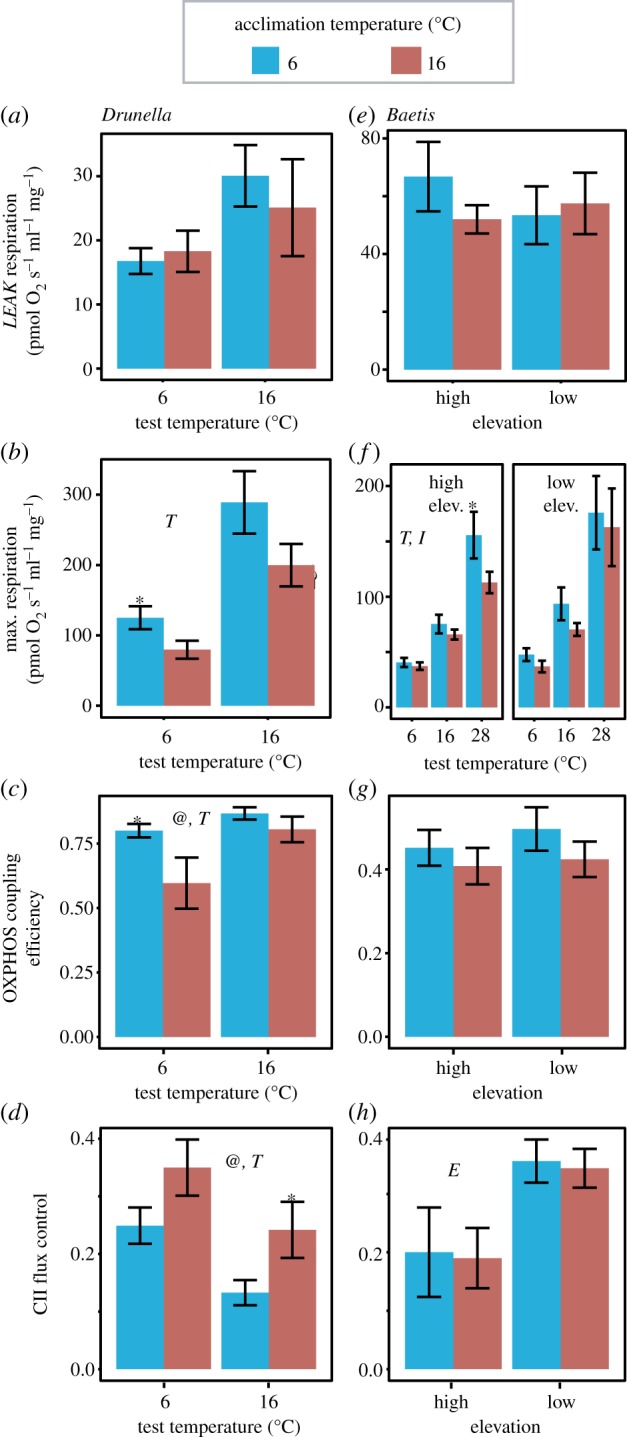Figure 3.

Mitochondrial respiration in Drunella (a–d) and Baetis (e–h) mayfly larvae acclimated to either cold (6°C) or warm (16°C) temperatures. LEAK (a,e) and maximal respiration (i.e. CI + CII) is presented (b,f) along with two flux control factors that were analysed: OXPHOS coupling efficiency (c,g) and CII flux control (d,h). Elevation and test temperature effects are presented for Baetis in (f). Error bars show ±s.e.m. @, T, E and I indicate significant main effects for acclimation temperature, test temperature, elevation or their interactions in the 2 × 2 ANOVAs, respectively. Asterisks indicate significant effects of acclimation temperature for individual comparisons based on Student's t-tests. For Drunella, n = 10 for 6°C acclimation, n = 9 for 16°C acclimation tested at 16°C and n = 6 for 16°C acclimation tested at 6°C. For Baetis, n = 10 for all treatments. (Online version in colour.)
